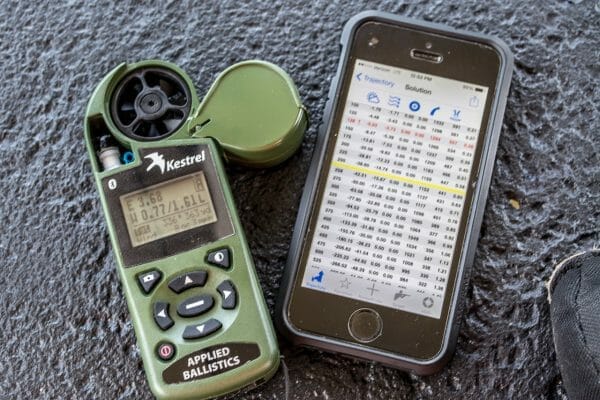
USA –-(Ammoland.com)- If wind were constant like gravity, making long-range first shot hits would be easy. Just let your ballistic calculator do the math and press the trigger properly.
However, the wind isn’t constant—it’s always changing, often second to second. To add complexity to the matter, it’s not at all uncommon for wind conditions to change throughout the distance of your shot. In terrain with obstructions, whether man-made or natural, you might have a completely different wind speed and direction at your shooting position as at the target.
For these reasons, the “skill” part of good long-range shooting is knowing how to gauge the wind accurately and consistently. Let’s discuss a few ways to do that.
Technology!
We live in the age of First World problems like worrying about whether we’ve got spare batteries for our shooting gear. Tools like weather meters, ballistic computers, and laser range finders are now commonplace and surprisingly affordable for what they do. Most of these tools are reliable enough for tough field use.
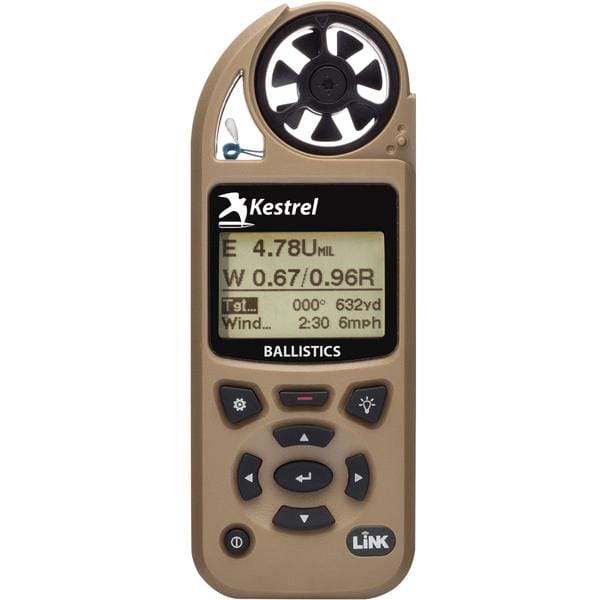
One “must have” tool for long-range shooters is the Kestrel 5700 Ballistics Weather. This nifty little tool is about the size of a smartphone and measures real-time weather conditions including wind speed and direction. While the device has a not-insignificant learning curve to figure out all the functions, getting basic wind measurements is simple. Just point it into the wind and let the capture mode run. If you’re a little unsure as to the wind direction, just keep moving it until you get a maximum velocity reading while the wind feels steady. It’ll capture the minimum, maximum, and average wind speed so if you’re shooting between gusts; you’ll have a reading on that constant “between the gusts” breeze.
The Kestrel is smart enough to know from which compass heading the wind is blowing. You can also point it at your target to capture that directional input. With these two pieces of information, the device knows the angle and speed of the wind relative to your shot. Assuming you’ve input your ammunition information, the rest is automatic. The Kestrel will tell you exact low many clicks, mils, or minutes of angle to adjust to account for wind. (Sweet Must Have Item: Kestrel Rotating Vane)
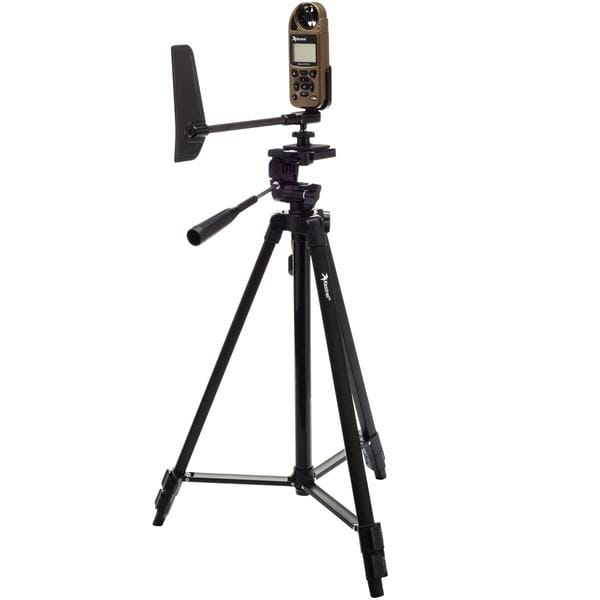
In open field conditions, the Kestrel can give you all the information you need. Unless your shooting position is blocking wind, you’ll have similar conditions from you to the target, so measuring wind at your position will do the job. However, if you are shooting in urban areas, a land populated by trees, or in the hills, you’ll also need ways to gauge wind conditions and directions way out there. That’s where some old school wind measurement tips become handy.
Figuring Out Wind Information the Old-Fashioned Way
If you don’t have a fancy electronic device or if you need to gauge wind conditions far away from your shooting position, there are several ways to calculate wind speed and direction. There are plenty of useful tools in virtually any environment to provide the information you need. Even if you’re shooting in a giant parking lot with no grass, shrubs, dust, or trees, you can still determine wind speed. Read on.
You can use grass, trees, bushes, and ground debris to help you estimate wind speed based on how various objects move in reaction to the wind. For calm conditions, you can also use smoke if available. Smoke (or air as you’ll see in a minute) is perhaps the most sensitive indicator, so if you see minimal smoke movement laterally, wind speed is probably less than 3 mph.
If you have a good scope, or better yet a spotting scope, you can also use mirage to estimate wind speed. Mirage is the “heat wave” effect you see in the form of moving and jiggly air when your lens is just out of focus. Look through the spotting scope at your target and un-focus a bit until you see some shimmer. As you view these “waves”, you’ll be able to see the direction in which the wind is blowing them. With no wind at all, the wavy lines will be vertically oriented.
3 – 5 mph
In this range, you’ll feel a steady but light breeze on your face. Be sure to concentrate on what you feel on your ears unless they’re tucked under a hat. If you are able to see the mirage, the wave lines will be roughly following the angle represented by 5 and 11 o’clock (or 7 and 1 o’clock) positions.
5 – 8 mph
Trees can help you here. Look to see if leaves, but not branches, are moving continuously. Mirage lines will be oriented at about a 45-degree angle.
8 – 12 mph
As the wind picks up past the moving leaves stage, look back to the ground. Between 8 and 12 mph, things like paper, leaves, and dust will begin to move around on the ground.
12-15 mph
In this range, branches, small trees, and shrubs start to move and sway.
15+ mph
Larger trees and branches will move. On the other hand, this is a terrible day to be shooting long-range targets. Unless your life or a vitally important mission depends on making a shot in these conditions why on earth are you trying to make precise long-distance shots in this kind of wind? For targets with big backstops, it can certainly be fun. Just don’t shoot beyond your skill and the conditions if there are serious ramifications to misses or off-center hits – like hunting.

What about wind direction?
Knowing the wind velocity is only have the battle. Accurately determining its direction is the other half. While you can get an idea of direction from mirage, it’s harder to get a precise angle relative to your shot, so you’ll want to use other indicators. Grass is a good one since the pattern is easy to see directionally. Small trees and shrubs work if there’s enough wind, and smoke is great if there’s any in the area. You can always do the old golfer’s trick and toss some blades of grass or light ground debris in the air to see how it falls.
Don’t forget…
Depending on your position, you may need to focus on what’s going on with the wind everywhere BUT where you’re situated. If you’re in a partially enclosed pavilion, your sniper hidey-hole or the woods, the wind speed at your shooting position may be far less than it is down range. If you measure with a meter at your position, be sure to double check down range conditions using the manual methods previously discussed.

About
Tom McHale is the author of the Practical Guides book series that guides new and experienced shooters alike in a fun, approachable, and practical way. His books are available in print and eBook format on Amazon. You can also find him on Facebook, Twitter, Instagram and Pinterest.

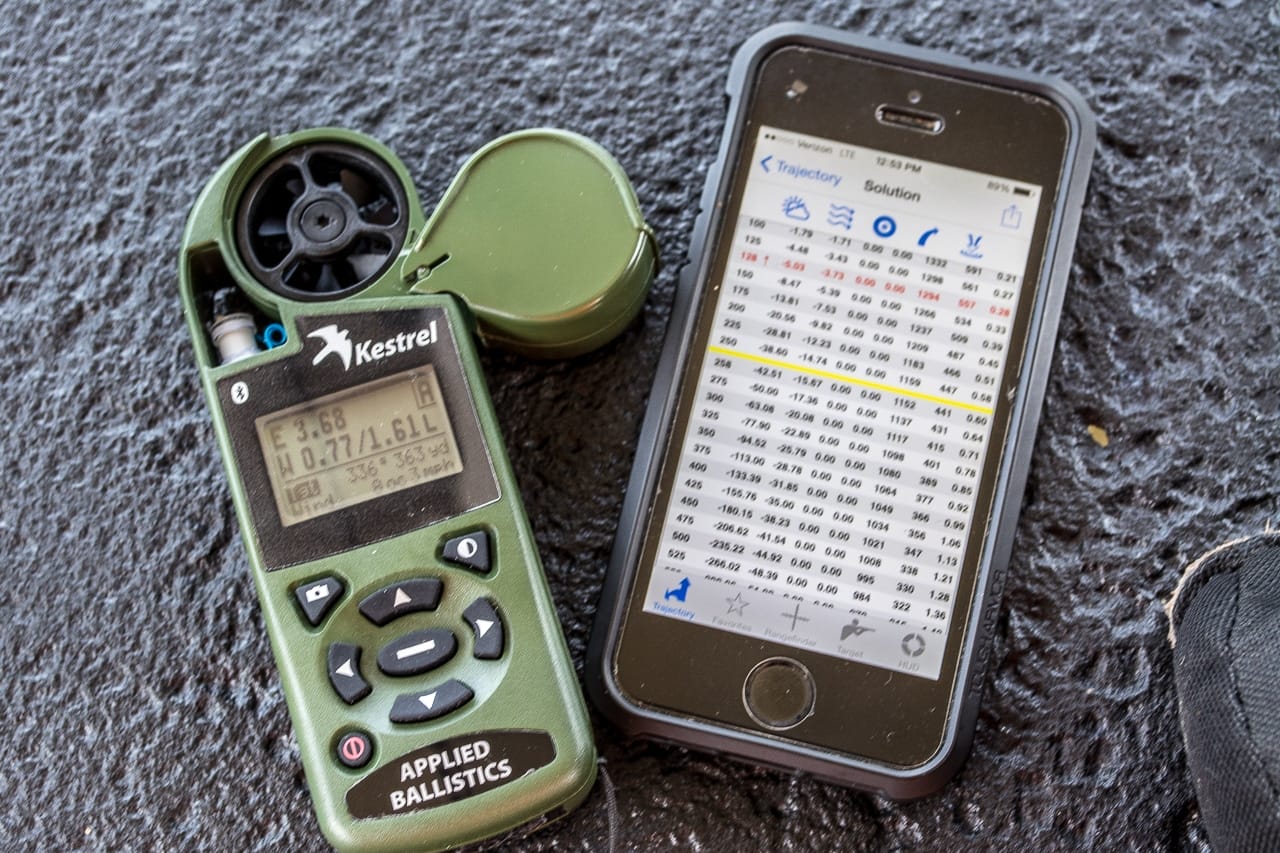

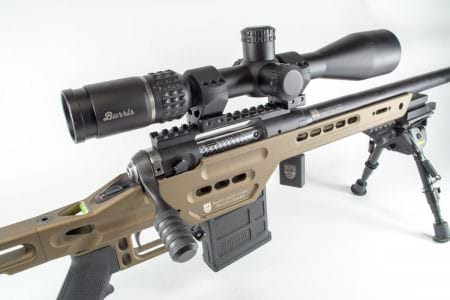


HOW TO DO IT BEST: All the fancy gear is nifty. But if you are without it there is a super way to learn wind and mirage–and it takes a bit of time. You MUST go to a known distance range that ranges 200 to 5oo yards and further if you need. High power rifles are not much affected at 100 yards except in really high winds–but then it is probably shooter/gun wobble. However a mirage can screw up 100 yard groups because the bullseye is not where you see it. First you must have an accurate rifle and ammo.… Read more »
Great Points Jim
Good article with good information.
However, if you are trying to make a 200 to 300 yard shot in a variable wind pattern over 6mph – GOOD LUCK!